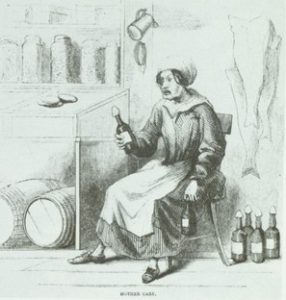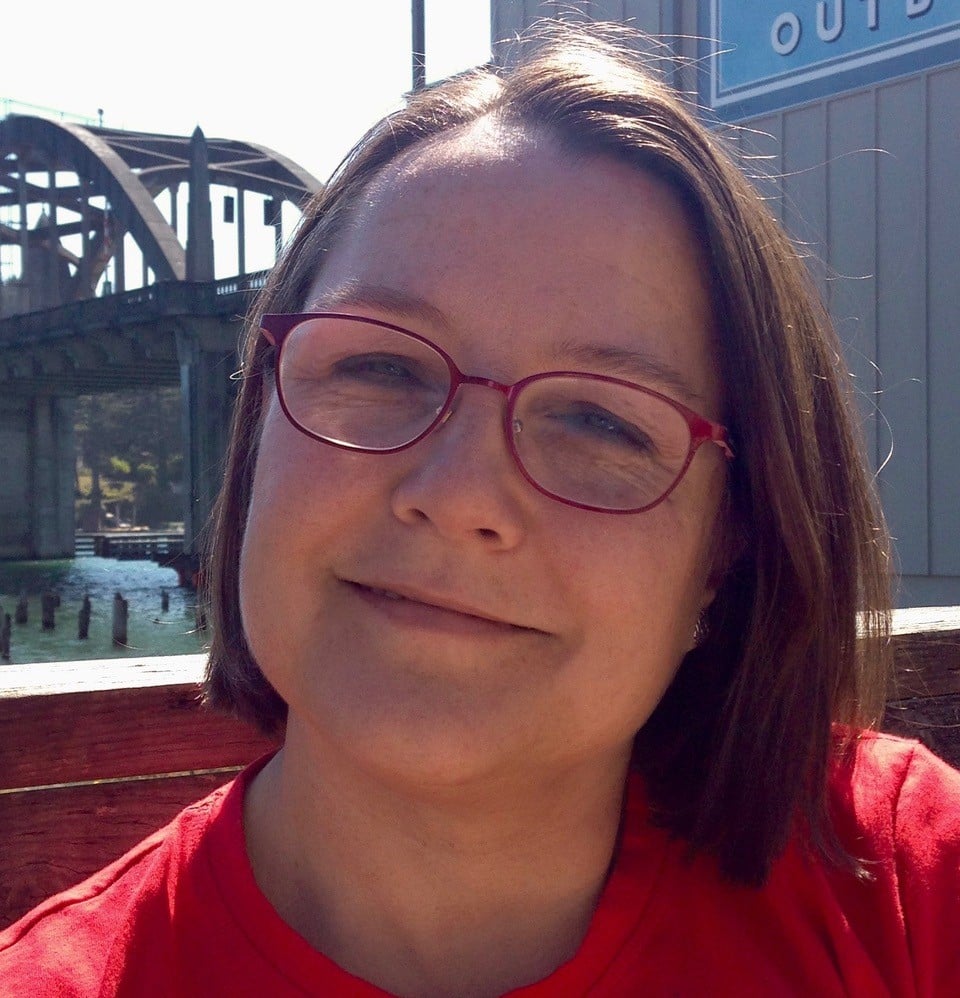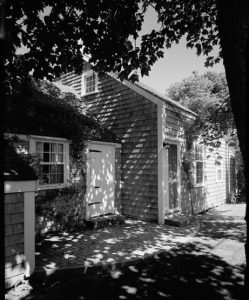 "Mother Cary" (Betsey Swain Cary) as drawn in 1860 by David Hunter Strother under his nom de plume “Porte Crayon."
"Mother Cary" (Betsey Swain Cary) as drawn in 1860 by David Hunter Strother under his nom de plume “Porte Crayon."
A while back, I wrote about the hotel in Marshalltown, Iowa run by my great-great-great-grandparents, which I like to fantasize might have been called “Hotel California.” The Shaws were not the only branch of my family to provide public accommodations.
After her husband[1] died in China in 1812, Betsey (Swain) Cary[2] operated a hotel called Washington House on Nantucket’s Main Street; her lodging book is in the collections of the Nantucket Historical Association, and lists guests from 1816 through 1829. On 22 August 1831, she sold Washington House to her brother-in-law, my great-great-great-great-grandfather,[3] who turned day-to-day operations over to the town sheriff, Elisha Starbuck.[4]
In September 1835, former President John Quincy Adams stayed at Washington House, according to the diary of his son … who was not very impressed. “We walked up to the hotel, a very indifferent one kept by a man named Starbuck; and, after delay, obtained our accommodations.” Fortunately the Adamses were more pleased with what Betsey Cary offered at her new establishment in the village of Siasconset, on the eastern edge of the island.
The Adams men spent their second day in this locality, and Charles Francis Adams had a good report of what they found: “We returned to the neat inn where we had ordered dinner, and found Mr. Paine,[5] Dr. Morton, the collector of the place,[6] Mr. Burnall [sic],[7] a Dr. Webb,[8] and Mr. Athearn[9] who joined our party. The dinner was neat and composed of Nantucket dishes – chicken chowder, pumpkins dressed in the shell and corn puddings. Fish could not be procured in time. The neatness of everything was remarkable.”
Betsey Cary ran the inn out of her home in ‘Sconset until her death, and was described – in less glowing terms than Charles Francis Adams used – in a November 1860 issue of Harper’s Weekly.[10] The house is still known as the Betsey Cary Cottage (also “Shanunga,” after a ship’s sternboard attached to the house in the nineteenth century). It is believed to be one of the two oldest houses on Nantucket … even older than “The Oldest House”![11]
As for her original establishment back in the town of Nantucket, it met a catastrophic fate less than a year after the former President stayed there. A chimney fire broke out in Washington House on 10 May 1836, and the hotel and several neighboring buildings burned to the ground in the island’s first conflagration. Within a short time, Elisha Starbuck was operating a new hotel very near his former establishment, and on 12 August 1836 he purchased the burnt-out remains of Washington House from my great-great-great-great-grandparents. I’m not certain what he did with the property after that, but a decade later, a hat shop in the exact same location was the source of Nantucket’s storied 1846 “Great Fire.” More on that another time!
Notes
[1] Capt. James Cary (1777–1812), a native of Nantucket, and son of Edward Cary (1738–1812) and Lydia Hussey (1746–1814).
[2] Elizabeth “Betsey” Swain (1778–1862), a native of Nantucket, and daughter of Uriah Swain (1754–1810) and Elizabeth Pinkham (1759–1810). Her sister Lydia Swain (1791–1828) was married to her brother-in-law Charles Cary (1789–1829).
[3] James Athearn (1784–1852), a native of Providence, Rhode Island, and son of George Athearn (1754–1837) and Hephzibah/Hepsibeth Hussey (1761–1842). His wife Lydia Cary (1785–1862) was a sister to James and Charles Cary … and also his first cousin, since their mothers were sisters.
[4] Elisha Starbuck (1780–1849), a native of Nantucket, and son of William Starbuck (1732–1812) and Mary Folger (1733–1825). His closest relationship to me – of many, I have no doubt! – is as a first cousin six times removed.
[5] Robert Treat Paine (1802–1885), a grandson of the signer of the Declaration of Independence.
[6] Dr. Martin Tupper Morton (1784–1841), a native of Freetown, Massachusetts, and son of Nathaniel Morton (1734–1826) and Rebekah Morton (1747–1820). He was married to Mary “Polly” Cary (1783–1854), a sister of James Cary, Charles Cary, and Lydia (Cary) Athearn, and cousin/brother-in-law to James Athearn. Dr. Morton was the Collector of Customs for Nantucket at this time.
[7] Barker Burnell (1798–1843), a native of Nantucket, and son of Jonathan Burnell (d. 1798) and Polly Giles (1779–1854). He served in the Massachusetts General Court – both in the House of Representatives and Senate – and in the U. S. Congress from 1841 until his death in 1843. His son, Barker Burnell, Jr. (1819–1861), was accused of embezzling $130,000 of the bank’s capital stock in the mid-1840s, and died in Chile in 1861!
[8] Dr. Thomas Hopkins Webb (1801–1866), a native of Providence, and son of Thomas Smith Webb (1771–1819) and Martha “Patty” Hopkins (1780–1807). He was a son-in-law of James Athearn, and featured in a previous Vita Brevis post.
[9] See footnote number 3.
[10] https://www.nha.org/digitalexhibits/sconset02564/timeline/mothercary.html
[11] The Jethro Coffin house was built in 1686, and is commonly called “The Oldest House,” although “Auld Lang Syne” and “Shanunga” – (much enlarged) ancient fishing shacks in Siasconset – are apparently a few years older.
Share this:

About Pamela Athearn Filbert
Pamela Athearn Filbert was born in Berkeley, California, but considers herself a “native Oregonian born in exile,” since her maternal great-great-grandparents arrived via the Oregon Trail, and she herself moved to Oregon well before her second birthday. She met her husband (an actual native Oregonian whose parents lived two blocks from hers in Berkeley) in London, England. She holds a B.A. from the University of Oregon, and has worked as a newsletter and book editor in New York City and Salem, Oregon; she was most recently the college and career program coordinator at her local high school.View all posts by Pamela Athearn Filbert →
